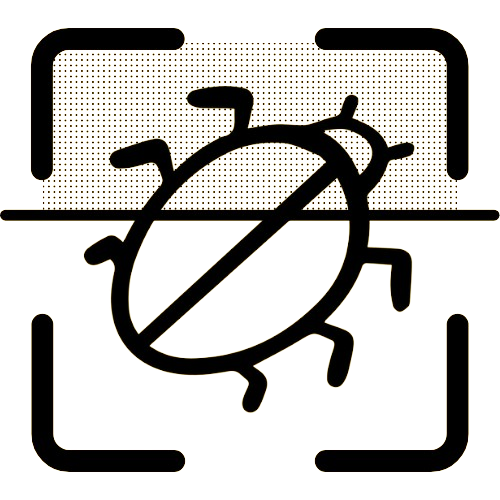Using a Bed Bug Scanner: Step-by-Step Guide to Effective Bed Bug Detection
October 12, 2025
Bed bugs have long been a source of household discomfort, silently creeping into our beds and homes. Understanding these pests and learning effective methods for bed bug detection is crucial to preventing and managing infestations. One vital tool that is gaining popularity is the bed bug scanner, a sophisticated innovation designed to simplify and streamline the detection process. In this article, we'll delve into the functioning and benefits of using an AI bed bug scanner, along with a detailed, step-by-step guide to effectively harness this technology.
Understanding Bed Bug Problems
Bed bugs are tiny insects that feed on human blood, typically while you're sleeping. They can cause itchy bites, allergic reactions, and significant stress. Identifying a bed bug problem can be challenging due to their small size and elusive nature. Failing to address a burgeoning infestation promptly can lead to extensive discomfort and costly treatments. Understanding how to check for bed bugs is paramount in keeping these pests at bay.
The Importance of Early Detection
Early detection is key to avoiding a full-blown infestation. Catching these pests early can limit their spread, reduce treatment costs, and minimize the impact on your quality of life. Cognitive technologies, like a bed bug detection app, facilitate rapid identification, enabling homeowners to take swift action. As such, timely detection is not just preventive—it's an essential part of a smart pest management plan.
Introducing Bed Bug Scanners: Technology at Your Fingertips
Thanks to technological advancements, bed bug scanners are now at the forefront of pest detection. These innovative devices leverage AI to accurately identify bed bugs from images, offering a high-tech solution to age-old pest control challenges. Unlike traditional methods that rely on visual inspection, AI-powered scanners provide precision and convenience, making bed bug detection more accessible than ever.
How the AI-Powered Bed Bug Scanner Works
An AI bed bug scanner uses image recognition algorithms to detect bed bugs in photos taken by the user. Here's a brief overview of how it works:
- Image Capture: You take pictures of areas where you suspect bed bugs may be present, such as mattress seams, headboards, and furniture crevices.
- Image Analysis: The AI analyzes the images, compares them with a database of bed bug visuals, and identifies potential infestations.
- Results Interpretation: You're provided with a detailed report indicating the presence or absence of bed bugs, along with the likelihood of infestation.
This approach not only speeds up the detection process but also enhances accuracy by reducing human error.
Step-by-Step Guide to Using the Bed Bug Scanner
To maximize the efficacy of a bed bug scanner, follow these steps:
- Download and Install the App: Begin by downloading the bed bug detection app onto your smartphone or device.
- Identify Suspected Areas: Focus on places commonly inhabited by bed bugs, such as bed frames, mattresses, and upholstered furniture.
- Capture Clear Images: Ensure sufficient lighting and take high-quality images of suspected areas. Keep the camera steady for clear shots.
- Upload Images: Using the app, upload the images to the bed bug scanner for analysis.
- Review Results: After a brief wait, review the comprehensive results provided by the AI scanner.
Successful Detection: Tips and Tricks
To enhance your detection success, consider the following tips:
- Use Additional Lighting: Proper lighting enhances image quality, aiding in accurate detection.
- Focus on Detail: Ensure close-up shots of seams and crevices, where bed bugs typically hide.
- Be Methodical: Cover all potential hiding spots to ensure comprehensive analysis.
For more in-depth strategies, visit our post on early detection strategies.
Interpreting Your Results
Once the scanner completes the analysis, you might ask, "What do my results mean?" The app categorizes the detection as positive, negative, or inconclusive based on image analysis. A positive result indicates potential bed bug activity, while a negative suggests the absence of bed bugs. Inconclusive results might necessitate retesting or seeking professional pest control advice.
Taking Action Post-Detection
Upon detecting bed bugs, considering next steps is crucial. Here’s a condensed action plan:
- Confirm and Isolate: Double-check suspected areas and isolate items to prevent spreading.
- Consult Professionals: Consider hiring licensed exterminators for effective treatment.
- Educate Yourself: Learn more about prevention through our comprehensive guides on treatment and innovation in bed bug detection.
Frequently Asked Questions about Bed Bug Scanners
- Are these apps accurate? Yes, the use of AI enhances the precision of detection compared to human inspection alone.
- Do I need any special equipment? Just your smartphone or tablet. The app guides you through capturing the optimal images for detection.
- Can it prevent infestations? While it doesn’t prevent infestations, it enables early detection, which is crucial for timely intervention.
Looking Ahead: Innovations in Bed Bug Detection
The future of bed bug detection lies in further developments in artificial intelligence and machine learning. As technology evolves, we look forward to even more sophisticated tools that will improve accuracy, user experience, and automation in pest control.
In conclusion, the advent of the AI bed bug scanner represents a significant leap forward in bed bug management. For anyone eager to prevent or address bed bug issues swiftly and accurately, this tool is invaluable. Try our AI bed bug scanner today and take the first step towards a bed bug-free home.
